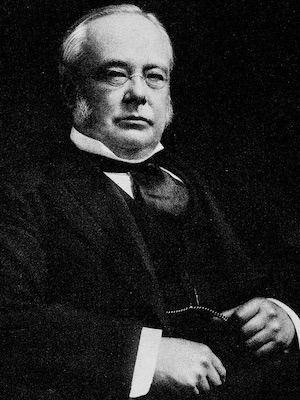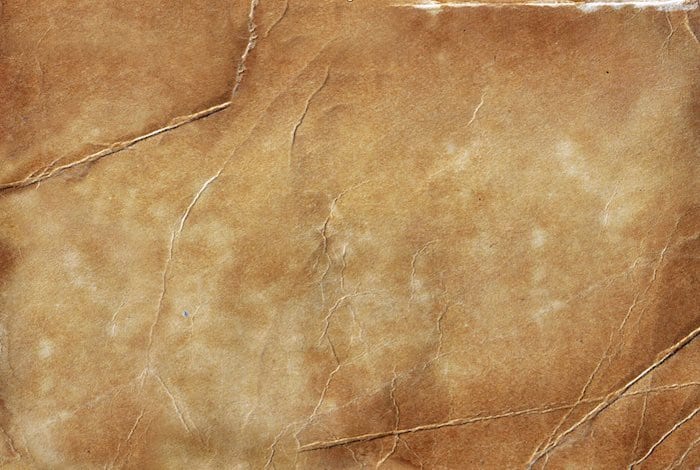William Henry Broadbent

Sir William Henry Broadbent, 1st Baronet KCVO FRS FRCP (1835-1907) was an English physician.
Broadbent was an eminent physician and pathologist; leading British authority in the fields of cardiology and neurology; and tuberculosis and cancer researcher.
Broadbent provided the first English language systemic account of nervous system syphilis, making it the topic of his Lettsomian Lectures (1874), and supplemented it with further data some two years later (1876).
Physician-Extraordinary to Queen Victoria and as Physician-in-Ordinary to King Edward VII and the Prince of Wales
Biography
- Born on January 23, 1835 in Lindley, England
- 1858 – MB, Royal School of Medicine, Manchester
- 1859–1896 St Mary’s Hospital, London
- 1881 – President of the London Medical Society
- 1893 – baronet, of Brook Street and Longwood
- 1887 – President of the Clinical Society of London
- 1901 – Knight Commander of the Royal Victorian Order
- Died on July 10, 1907 in London, England of influenza
Broadbent was endowed with a robustness of constitution that enabled him to tackle his numerous responsibilities without ill effect, and a Yorkshireman’s sturdiness of mind, amounting almost to stubbornness, which made him cling to his opinion once he had formed it, in face of all differences.
Brown GH, MunksRoll
Medical Eponyms
Broadbent sign (1895)
Systolic retraction of the posterolateral area near the 11th and 12th left ribs, secondary to pericardial adhesions (adherent pericardium).
First reported in 1895 by his Broadbent’s son, Walter, who gave full credit to his father for observing this phenomenon many years earlier. The findings have persisted in the literature as Broadbent’s sign and were described subsequently by Sir William in 1898
…a visible retraction, synchronous with the cardiac systole, of the left back in the region of the eleventh and twelfth ribs, and in three of which there is also systolic retraction of less degree in the same region of the right back. In all the cases there is a definite history of pericarditis, and in three of them there are other conditions strongly suggesting an adherent pericardium.
This sign has long been pointed out by Sir William Broadbent in the wards of St. Mary’s Hospital, but, so far as I have heard, has not had sufficient importance attached to it elsewhere. Adherent pericardium has frequently such a serious influence on the course of valvular disease, that any aid towards the diagnosis seems worthy of attention.
Walter Broadbent 1895 (son attributing sign to his father, William)
A systolic tug of the left false ribs posteriorly communicated by the diaphragm may be conspicuous. The recoil from the drag may be so distinct as to look and feel to the hand like pulsation…systolic retraction of the lower ribs on the lateral or posterior aspect of the thorax is of the greatest importance, and can scarcely be due to anything else than pericardial disease
William Broadbent 1898
Broadbent law
It will be found that throughout the body the paralysis is proportionate to the independence of the muscles of the two halves. In the face and tongue, where, as already stated, the paralysis is partial, the movements are habitually symmetrical, and independent movements, though possible, are extremely rare and exceptional. A minute analysis of this partial paralysis would further illustrate the general law, were there time for it. I will only mention the fact that, while a hemiplegic man can close both eyes together, he cannot, however accomplished in the trick previously, wink the eye of the paralysed side alone.
Broadbent WH. BMJ 1876
Nowdays, more of a paraphrased aphorism.
A law almost exclusively recounted by medical eponym dictionaries which becomes more condensed by the decade. More a paraphrased aphorism.
Lesions of the supranuclear fibres — i.e., of the upper segment of the motor tract — have less paralysing effect upon those muscles which habitually produce bilateral movements than upon those which more frequently act independently of the opposite side [1907]
Lesions of the upper segment of the motor tract cause less marked paralysis of muscles that habitually produce bilateral movements than of those that commonly act independently of the opposite side. [1970]
Upper motor neurone lesions result in less paralysis in muscles concerned with bilateral contractions than those which act unilaterally [1987]
Major Publications
- Broadbent WH. Cancer : a new method of treatment. 1866
- Broadbent WH. An attempt to remove the difficulties attending the applications of Dr. Carpenter’s theory of the function of the sensori-motor ganglia to the common form of hemiplegia. British and Foreign Medico-Chirugical Review 1866; 37: 468–481
- Broadbent WH. On the cerebral mechanisms of speech and thought. Medico-Chirurgical Transactions 1872; 55: 145–194.
- Broadbent WH. Lettsomian lectures on syphilis of the nervous system. Lancet 1874; 104: 47–48, 115–122.
- Broadbent WH. A Lecture on the Theory of Construction of the Nervous System. Br Med J. 1876 Mar 25;1(795):371-3.
- Broadbent WH. Illustrations of syphilitic affections of the brain. Lancet 1876; 108: 739–741, 773–775, 813–814.
- Broadbent WH. A case of peculiar affection of speech, with commentary. Brain 1879; 1: 485–503
- Broadbent WH. On a particular form of amnesia: Loss of nouns. Medico-Chirurgical Transactions 1884; 67: 249–264
- Broadbent WH. The pulse. 1890
- ** Broadbent Walter. An unpublished physical sign. Lancet 1895; 146(3752): 200–1. [Broadbent sign]
- Broadbent WH. Adherent Pericardium. Transactions of the Medical Society of London 1898; 21: 109-122 [Broadbent sign]
- Broadbent WH. Heart disease: with special reference to prognosis and treatment. 1900
- Broadbent W, Broadbent JFH. Heart disease and aneurysm of the aorta, with special reference to prognosis and treatment. 1906 (4th edition)
References
- Broadbent W. Selections from the writings, medical and neurological of Sir William Broadbent. 1909
- Broadbent ME. Life of Sir William Broadbent. 1909
- William H Broadbent physician to Royalty. JAMA. 1967;199(3):212-213
- Eadie M. William Henry Broadbent (1835-1907) as a neurologist. J Hist Neurosci. 2015; 24(2): 137-47

eponym
the person behind the name
BA MA (Oxon) MBChB (Edin) FACEM FFSEM. Emergency physician, Sir Charles Gairdner Hospital. Passion for rugby; medical history; medical education; and asynchronous learning #FOAMed evangelist. Co-founder and CTO of Life in the Fast lane | On Call: Principles and Protocol 4e| Eponyms | Books |
